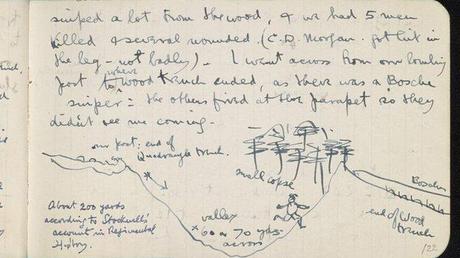The importance of the autograph
When I was at school in the 1980s, everybody had to “do” the First World War Poets at some point. Siegfried Sassoon and Wilfred Own were something of a rite of passage for adolescents waking up to the fact that the world was not nearly such a nice place as they might have imagined. From our tidy classrooms in the Home Counties we were transported to scenes of almost medieval carnage played out on the battlefields of Europe. That was then, though, and I have rarely visited the words since.
In an age where almost any words from any period of anybody’s literature can be summoned at the click of a button it is surprising that the ‘actual words’ in the author’s own hand can cause such a stir. Siegfried Sassoon’s original wartime notebooks, complete with encrusted Somme mud, have just been made digitally available for the fist time by the Cambridge Digital Library. Their meticulous digital curation has done us all a great service. These, unlike the scribble of a felt marker on a photo or programme, are autographs that really matter. To see Sassoon’s account of his raid on an enemy trench complete with his almost childish drawing is to feel connected to the man himself. These are not just words, as read in school textbooks, these are writing – the visual trace of a mind’s journey through a landscape of horror.

Image: BBC
That these have been released on the 100th anniversary of the outbreak of World War One is of course no accident. However, the fact that they have been released during a period of relentless warfare in the Middle East is unplanned. Just at a point where our saturation with images of suffering from Gaza has reached a point close to immunity, these childish sketches reach out to us. Though few would care to admit it, we do reach a point where courageous reporting and brilliant camera work can move us no further. That is precisely the point where words outlast images.
Today’s reporters from the front keep their notes in smartphones and tablets. The closest we could come to the recaptured immediacy of Sassoon’s notebooks might be to look at their live-tweeted timeline after the event.
I wonder whether in 100 years’ time curators will be writing out those tweets by hand with a similar reverence displayed by those who handle Sassoon’s diaries?
